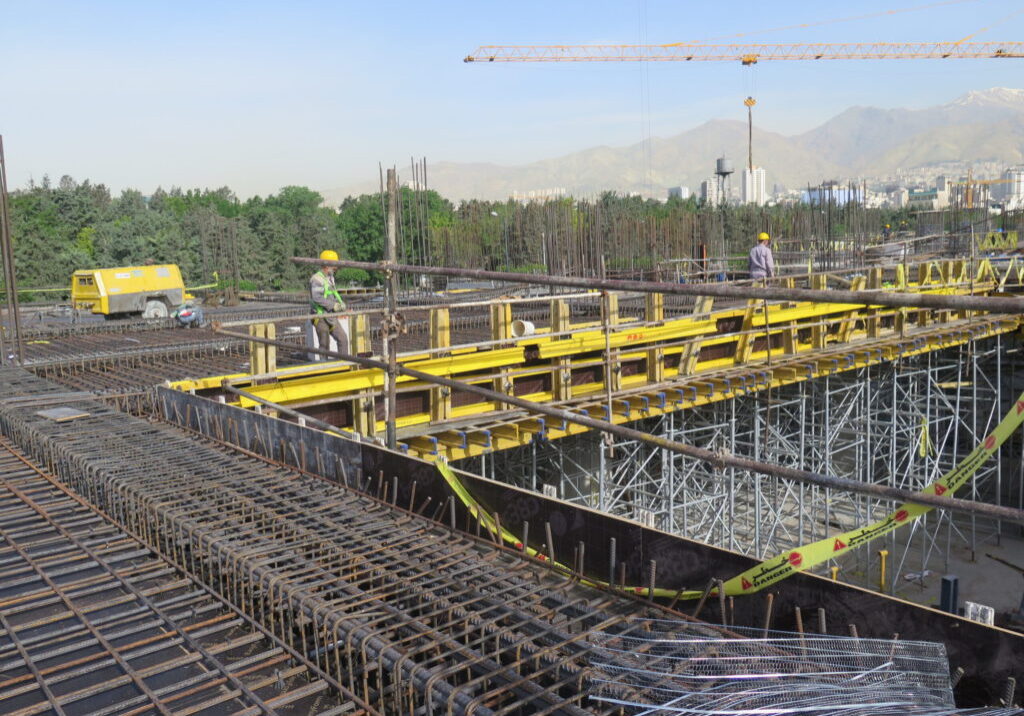Geology and Geotechnics
Geological engineering
The purpose of geological studies and geological engineering is to identify various layers of soil and rock in the first place and then determine the different physical and geological properties and assess the geological risks for the construction of numerous structures such as tunnels, bridges, trenches, embankments and buildings. These consulting engineers, with their experienced expert team and field operations equipment such as geological hammers, Schmidt hammers, GPS and compass, conduct all matters related to engineering geology for profuse civil engineering projects
Field visit
During the field visits, the team identifies the factors affecting the design by examining, evaluating and identifying the exact location according to the requirements of the project, including various soil and rock properties, hydrogeology, geological structures such as faults and their effects on the design, borrow pits and diverse geological hazards during long-term construction and maintenance, while also defining the boundaries of different layers using GPS, separately assesses the characteristics of the unit
In soil units, while determining the thickness, material, field classification of soil unit, parameters such as particle size distribution , plasticity, density, adhesion, load capacity, the presence of aqueous layers, drift potential and, if necessary, usability to the title of the materials and sources of the borrow pits are initially assessed
In rock units, first and foremost the type of formation is identified. Then the thickness, sequence of diverse layers and major geological structures such as folds and faults will be identified and its footprints on the structure will be investigated. While the evaluation of the compressive strength of different layers by Schmidt hammer is being conducted, the condition of rock mass discontinuities will be evaluated. At this level, applying a compass, the slope and length of each discontinuity are removed and in order to the classification of the engineering of each unit, the distance, opening, filling and surface conditions of each discontinuity are recorded
In the last phase of recording rock mass information, the relevant geological hazards including rock slip potential, wedge formation, rock block overturning, rock fall, solubility, erosion, etc. will be evaluated
Office studies
The geology team combined field survey data and GPS-recorded points with other data (available large-scale geological maps, satellite imagery, and aerial photographs) to provide and prepare geological maps to the required scale
The most significant step in engineering geology studies is to prepare quantitative data to get the design team working. To fulfil this purpose, by preparing geological profiles and sections, soil and rock masses are separated from each other and the engineering characteristics of each layer are determined separately in order to form engineering geological layers. In rock layers, the classification of rock masses is determined so that by them, the initial design of technical buildings might be done more effortlessly. Finally, by analyzing field data and soil and rock mass engineering classification applying experimental relationships and up-to-date engineering software, diverse parameters are estimated and provided to the design team
In rock layers, kinematic evaluation and analysis are together conducted in order to evaluate the potential of structural instabilities, particularly at the site of rocky slopes
In the final stage of the first phase of studies, geologists, according to the knowledge of the characteristics of the earth, high-risk geological points and the location of numerous structures, propose instructions for geotechnical operations to monitor the various stages of drilling and geotechnical experiments, different parameters examining the design requirement in the second phase of the study. All of the above-mentioned points will be submitted in the form of engineering geology report and map album
In the second phase of the studies, after obtaining the results of geotechnical experiments, combined with geotechnical and geological data, the design parameters are refined and the design team is provided with the second phase of studies. The most essential geological engineering services of these consulting engineers are as follow
Geological studies and engineering geology
Geological studies to assess the stability of rocky and earthy slopes
Prepare the instructions for eotechnical studies and observe the implementation
Seismicity studies and seismic hazard analysis
Studies and assessment of geological hazards
Studies of borrow pits and construction materials
Liquidation potential evaluation studies and its control
Evaluation and control studies of quicksand






